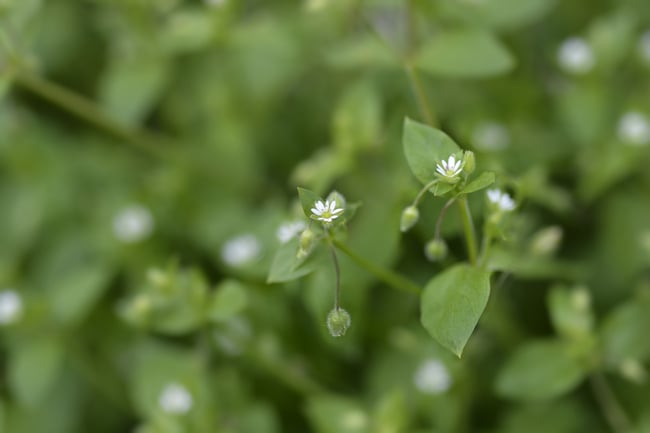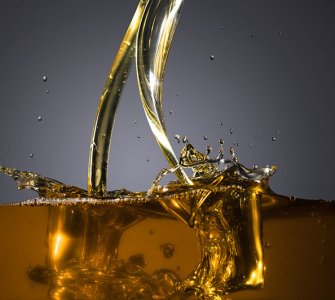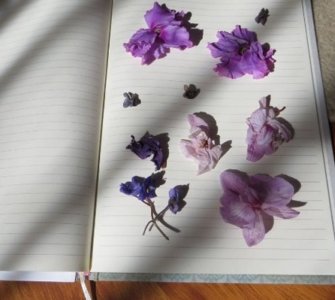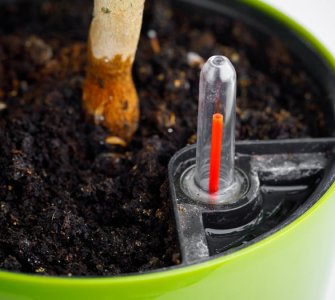Weeds! Just the word is enough to send a shudder down the spine of most gardeners. However, on my journey to a more organic, earth-friendly lifestyle, I have recently realized that weeds aren’t necessarily all bad. ‘Good weeds’ may sound like an oxymoron, but like all things in nature, many have beneficial purposes, and a few are even edible.
Seven types of good weeds to keep in your garden:
- Dandelion
- Purslane
- Clover
- Chickweed
- Goldenrod (in North America only)
- Lamb’s-Quarter
- Broadleaf Plantain
Instead of pulling them out the moment they appear, I have started to unlock and harness the superpowers of some common weeds. Once you realize their benefits, it won’t be long before you also find yourself welcoming the appearance of some previously-scorned little plants in your garden.

Table of Contents
7 Types Of Good Weeds To Keep In Your Garden
Not all weeds are the same, and while some, like jimson weed should be shown no mercy if they crop up in your garden, others may deserve a reprieve. Being able to recognize beneficial weeds is a lot about knowing how to use them.
Although you probably don’t want your garden to be covered in unwanted weeds, the battle to keep your property weed free may not seem like such an uphill struggle if the determined little plants become part of your harvest.
One quick note about consuming any of the edible weeds on my list:
- Only use eat weeds you are sure have grown wild or popped up in your own garden. Never harvest from an area that may have been treated with pesticides or herbicides.
- Be sure you have identified edible weeds correctly. Not all weeds are edible, so you don’t want to make an incorrect plant ID.
These are some common ‘good weeds’, their benefits, and how you can use them:
1. Dandelion
Blowing the feathery ball of dandelion seeds into the air while making a wish is a magical part of childhood (truth be told, I still occasionally do it myself!). However, you may shudder at the thought of spreading hundreds of dandelion weed seeds about – if you have a lawn, it may seem more like a nightmare than a special wish.
Dandelions may be prolific and crop up everywhere, but these small green plants with bright yellow flowers aren’t necessarily bad. They attract an assortment of beneficial bugs like bees.
According to Michigan State University, the entire plant can also be consumed as food in one way or another. The leaves and the flowers are apparently delicious and highly nutritious – I haven’t tried them yet, but I will keep you posted once I collect enough from a safe source.
2. Purslane
This hardy little weed, also called hogweed, frequently pops up in crevices and thrives in harsh sunny conditions. Look out for it in your rock garden, where you may find this low-growing little plant nestled close to stones.
Purslane often seems to appear out of nowhere, but it is entirely edible and has a lovely zingy, salty crunch! (this one I have tried!) The plant is very healthy and can be eaten raw, added to soups, or sautéed.
3. Clover
But before you automatically start pulling up the spindly clover plants to clear the ground around plants, take a second look at these cute little plants. Think of clover weed as a blanket coating for soil.
The covering of clover you find under plants often serves a valuable purpose. The delicate blanket cleverly stabilizes moisture in the soil, so in addition to providing a natural layer of nitrogen fertilizer, it also acts as a ground cover to retain moisture.
Clover is entirely edible and is frequently used as a medicinal herb. And, of course, if all of that isn’t enough, if you let this handy weed grow in your garden, you have a much higher chance of finding an elusive four-leaf clover!
4. Chickweed
Chickweed isn’t only loved by chickens. This delicate weed is highly nutritious and surprisingly tasty for humans too. Besides the roots, the entire plant can be consumed, raw, or cooked.

Besides your garden, look out for chickweed in meadows and lawns. If you want to harvest some to eat, choose bright green young leaves. Chickweed has been described as a superfood – and we all thought it was a pesky weed!
5. Goldenrod
Goldenrod (Solidago species) is often confused with ragweed (which makes a lot of people sneeze and triggers nasal allergies), which has given it a bad rap. It is, in fact, a beneficial blooming plant that will attract plenty of valuable pollinators to your garden.
While researching good weeds to keep in your garden, I found that while goldenrod is highly beneficial in some parts of the world, it is considered an invasive pest in others. If you live in North America, leave it in your garden. If you live anywhere else, pull it out.
Gardeners know that pollinators are essential to good crops, so it is a good idea to nurture pollen-laden goldenrod if you live in an area where it occurs naturally. The seeds are also an essential food source for several types of migrating birds.
6. Lamb’s-Quarter
Compared to many other weeds, lamb’s quarter can grow quite tall. It is not uncommon for them to reach 3ft in height. It is also commonly called fat hen, goosefoot, baconweed, or wild spinach.
So, here’s the surprising part about this ultra-common weed. The leaves, stems, and flowers are completely edible and apparently taste a lot like spinach.
Don’t panic if you see the white coating on the leaves of lamb’s quarter. It does not have powdery mildew or any other horror fungal disease that can spread to any of your precious garden plants. This common weed just has a peculiar coating that makes it look almost waterproof.
Now when you are looking for something, you can’t find it, and since I started this article, I have been scanning everyone’s garden for this lambs quarter which I usually spot everywhere. I can’t wait to taste it, and I will report back as soon I report back as soon as the next batch of lambs-quarter weed appears (I can’t believe I am looking forward to the appearance of weeds!)
7. Broadleaf Plantain
There is no denying that this low-growing perennial plant isn’t the most attractive weed on this list, and it can give a lawn or garden an instant neglected look. But there is more to these broad-leaf eyesores than just their appearance.
Common plantain weed that springs up everywhere is a widely used medicinal plant. You can even buy it as a health supplement in tea or capsule form! It is a safe remedy that has been used for centuries for everything from tummy aches to skin rashes.
As you know, I have been making rosewater for my oily skin, and who knew that common plantain weed is also such a great asset? It can even be the cure for the itching caused by some of the less welcome weeds, like poison ivy.
Are There Any Good Weeds?
There are plenty of good weeds, but you may not want to keep all of them on display in your garden! For those of us with kids and pets, burdock weed, stinging nettle, or bull thistle are not an option, even though they can be made into excellent natural fertilizers.
Many plants that are regarded as weeds have medicinal uses; some, like purslane, dandelion, and chickweed, are also edible. By letting beneficial weeds grow in your garden, you may find yourself harvesting more than just the vegetables you planted.
Do Weeds Improve Soil?
Weeds can be a chore to remove in our gardens. Some of us have even resorted to drastic measures to control them and may have a bottle of weed killer still lurking in our gardening arsenal!
Not all weeds are bad, and while they may not be as gorgeous as a garden of roses, weeds often work as nature’s ambulance for when the soil needs some repair work. Bare uncovered soil? No problem! Infertile, loose soil? Also, no problem. A covering of weeds often appears out of nowhere to repair soil that has been disturbed.
In natural areas, weeds can be hugely helpful. They are also a good indicator of soil health. So while you probably don’t welcome all the weeds in your garden, think of them as Mother Nature’s helpers that have landed in an unnecessary spot.
Can Weeds Be Used As Fertilizer?
Weeds are an excellent natural fertilizer if you know how to use their nutrients without spreading unwanted weed seeds far and wide. Although many beneficial weeds exist, you may not want your front garden infested with stinging nettle. Making offending plants into liquid fertilizer is a great way to utilize their best elements to improve the health of your soil or plants.
The best way to make unwanted weeds into fertilizer is to create a weed fertilizer tea. Believe it or not, there are different recipes for weed fertilizer teas!
Dabbling in weeds opened a whole new dimension of gardening for me. I love working with nature, and now that I know that some weeds have such valuable properties, I can hardly wait to spy a ‘good weed’ popping up in my rosebed.


